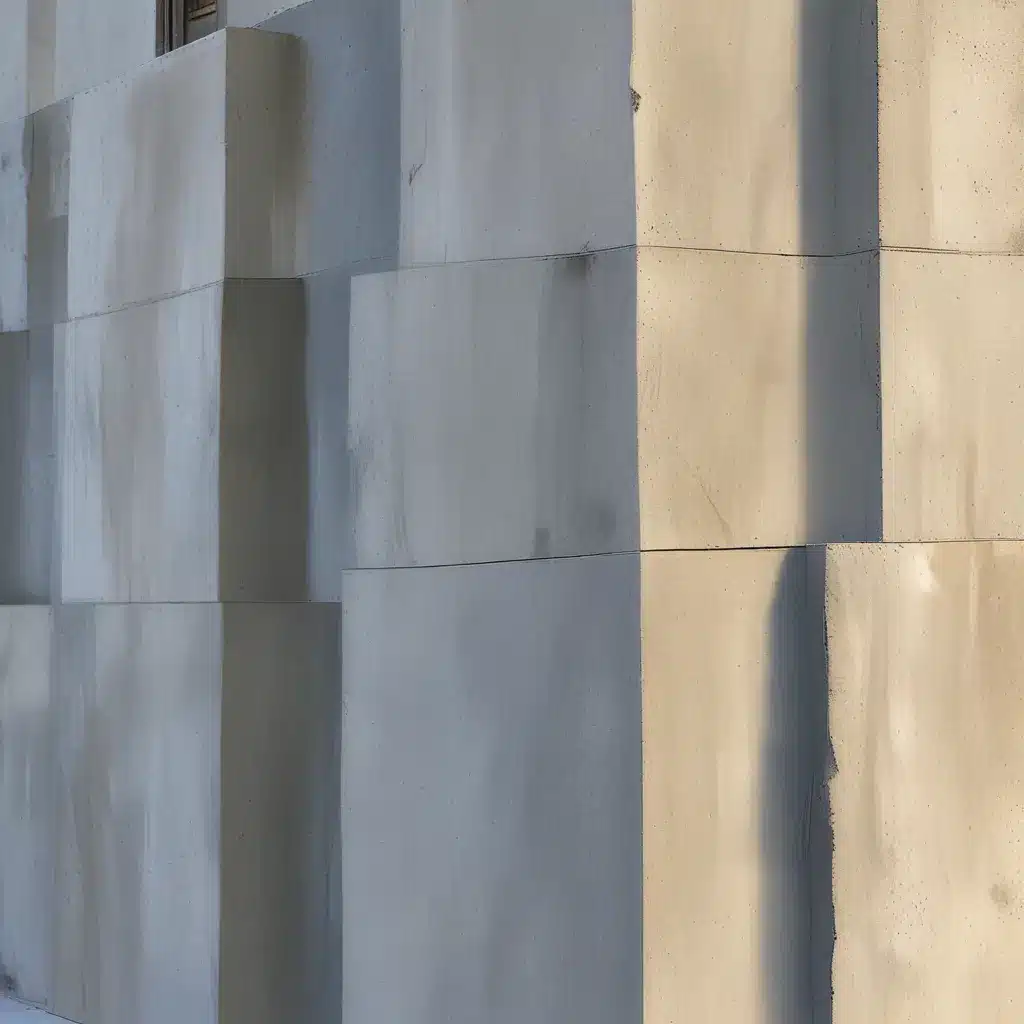
Discovering the Intersection of Art, Sustainability, and Construction
I’ve always been fascinated by the intersection of art, technology, and construction. As someone who appreciates the beauty of architectural marvels and the ingenuity behind them, I was thrilled to uncover a game-changing innovation that’s poised to revolutionize the industry – aluminum-reinforced concrete.
This eco-friendly material, developed by the research team at DARE2C in Trondheim, Norway, is set to redefine the way we think about construction and sculpture. By replacing over 50% of the traditional cement with sustainable binders, aluminum-reinforced concrete not only slashes carbon emissions but also unlocks a world of artistic possibilities.
Sustainable Artistry: The Rise of Aluminum-Reinforced Concrete
For years, steel has been the go-to material for both construction and art, prized for its strength and durability. But as the world becomes increasingly conscious of our environmental impact, the art world has been on a mission to reduce its carbon footprint. The Gallery Climate Coalition (GCC), for example, has set a collective goal of reducing the industry’s emissions by at least 50% by 2030.
That’s where aluminum-reinforced concrete steps in as a game-changer. This revolutionary material not only boasts a significantly lower carbon footprint than steel but also opens up new realms of artistic expression. By using binders instead of traditional cement clinkers and burning the cement at lower temperatures, the team at DARE2C has managed to drastically reduce both carbon emissions and energy usage.
But the benefits don’t stop there. Aluminum-reinforced concrete can even be mixed with seawater, making it a versatile choice for coastal regions or areas with limited access to freshwater. This versatility is a game-changer, particularly in the art world where artists are constantly seeking new mediums to explore.
Pushing the Boundaries of Sculptural Innovation
One of the most captivating examples of the intersection between art, sustainability, and construction is the Arcos del Milenio, a giant sculpture made of steel-reinforced concrete created by Mexican artist Sebastián. Weighing an impressive 1,500 metric tons and standing 52 meters tall, this architectural marvel covers an area of 1,700 square meters.
But what really sets the Arcos del Milenio apart is the technical innovation that went into its creation. The sculpture is a testament to the power of masonry tradition combined with cutting-edge research into the strength capacities of reinforced masonry. By using a unique arrangement of bricks, longitudinal bed-joint reinforcement, and surrounding mortar, the Arcos del Milenio showcases the remarkable potential of this material.
Another stunning example of the art-construction synthesis is the Floralis Generica, a 23-meter-tall, 18-ton sculpture in Buenos Aires, Argentina. This captivating piece, created by architect Eduardo Catalano, combines an aluminum skeleton, stainless steel, and reinforced concrete to mimic the opening and closing of a giant flower.
The use of innovative materials and engineering techniques in these sculptures not only pushes the boundaries of artistic expression but also showcases the remarkable potential of construction materials to create awe-inspiring structures.
Revolutionizing the Construction Industry
The rise of aluminum-reinforced concrete is not just a game-changer for the art world; it’s also set to transform the construction industry as a whole. By being a durable, flexible, and eco-friendly alternative to traditional steel-reinforced concrete, this material has the power to redefine the way we build.
Let’s take a closer look at the advantages of aluminum-reinforced concrete:
| Feature | Advantage |
|---|---|
| Carbon Footprint | Significantly lower than steel, with a reduction of over 50% in carbon emissions and energy usage. |
| Versatility | Can be mixed with seawater, making it ideal for coastal regions or areas with limited access to freshwater. |
| Strength | Comparable to traditional steel-reinforced concrete, with the added benefit of being more lightweight and flexible. |
| Sustainability | Uses binders instead of traditional cement clinkers, reducing the environmental impact of construction. |
The implications of this revolutionary material are staggering. Imagine the possibilities for architects, engineers, and construction companies to create truly sustainable and visually stunning structures that push the boundaries of what’s possible.
Embracing the Future of Concrete Artistry
As I delve deeper into the world of aluminum-reinforced concrete, I can’t help but feel a sense of excitement and wonder. This material not only has the power to transform the construction industry but also to inspire a new era of artistic expression.
I can envision a future where public spaces and cityscapes are adorned with breathtaking sculptures, each one a testament to the intersection of art, sustainability, and engineering. Imagine walking through a park and being greeted by a towering, aluminum-reinforced concrete sculpture that opens and closes like a living, breathing work of art.
The team at Concrete Rtownsville is at the forefront of this revolution, dedicated to exploring the endless possibilities of this innovative material. By combining their expertise in concrete services and solutions with a deep appreciation for the art of construction, they are poised to redefine the landscape of the industry.
As I continue to uncover the fascinating stories and groundbreaking innovations that lie at the heart of concrete artistry, I can’t help but feel a sense of awe and excitement. The future of construction is here, and it’s made of aluminum-reinforced concrete – a material that’s set to revolutionize the way we build, create, and experience the world around us.

